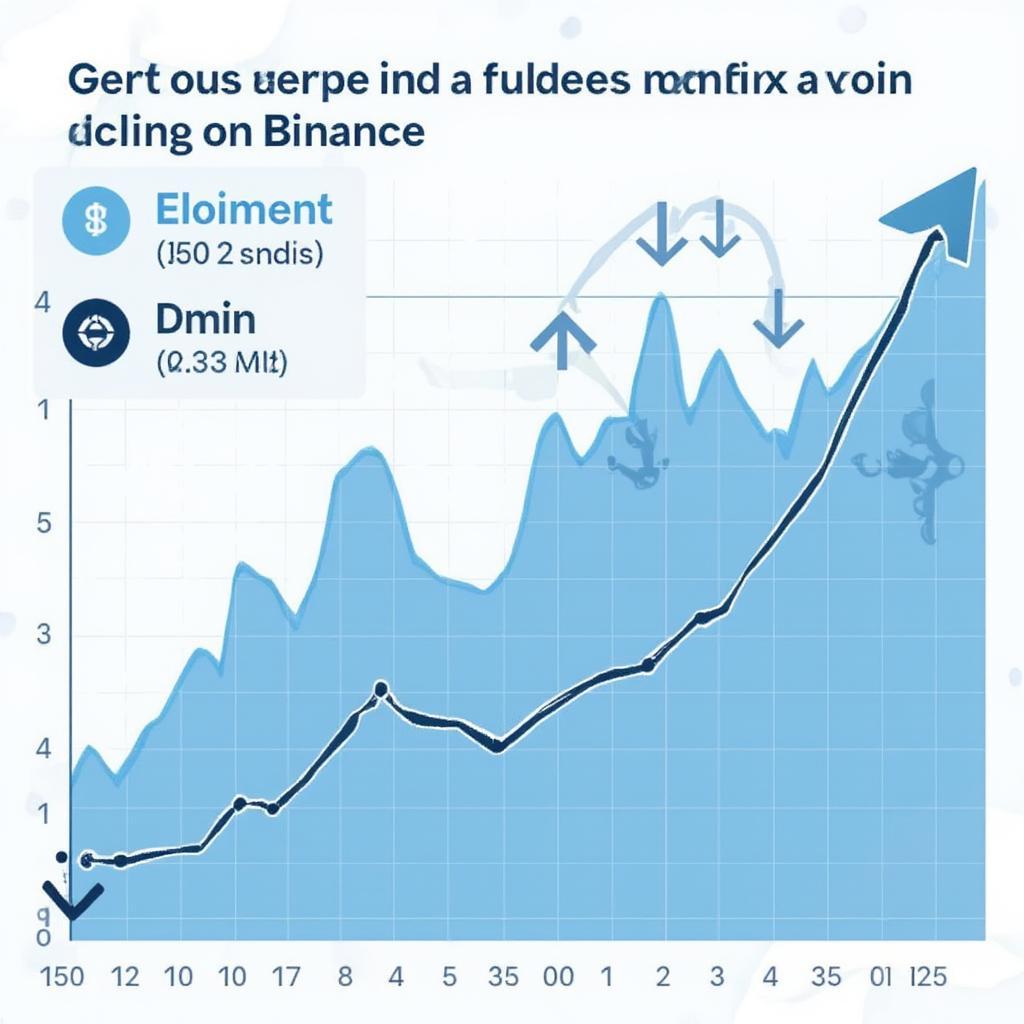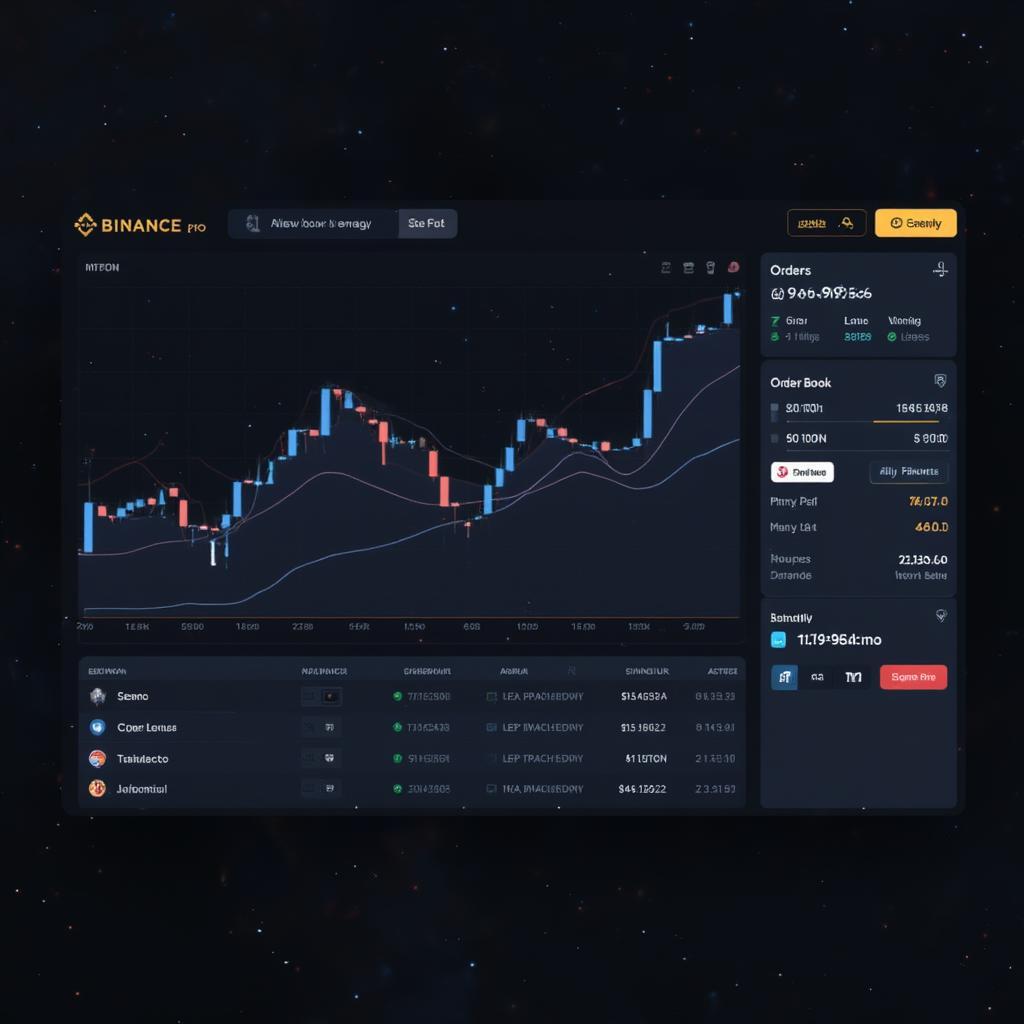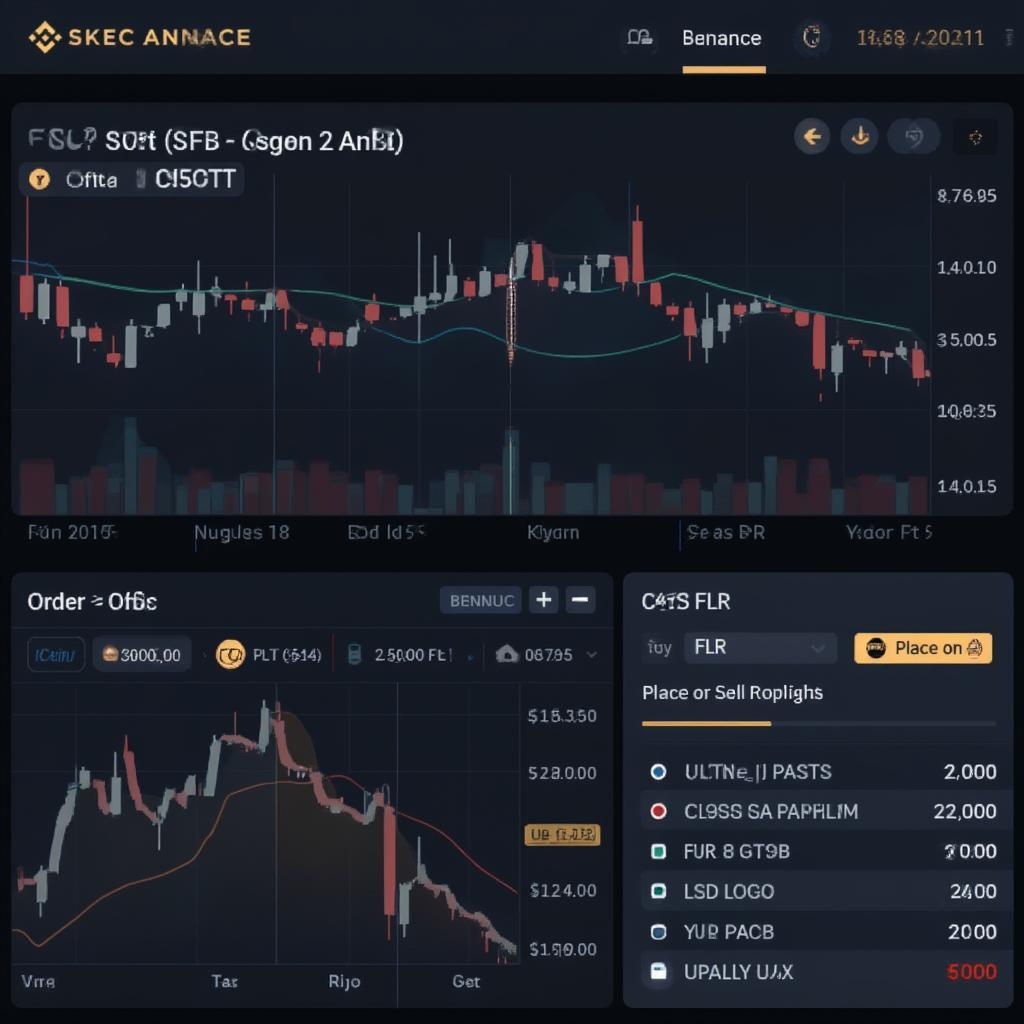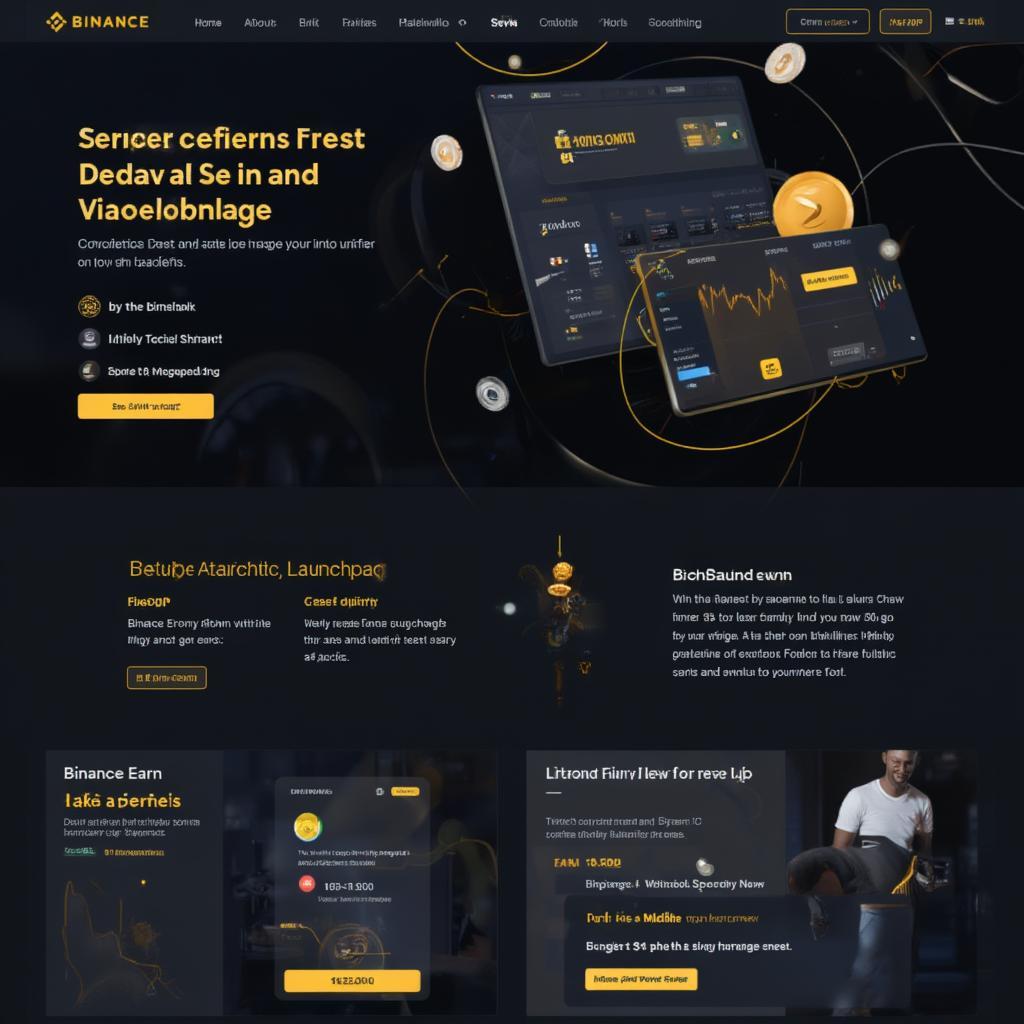Mastering the Binance App API: A Comprehensive Guide for Investors
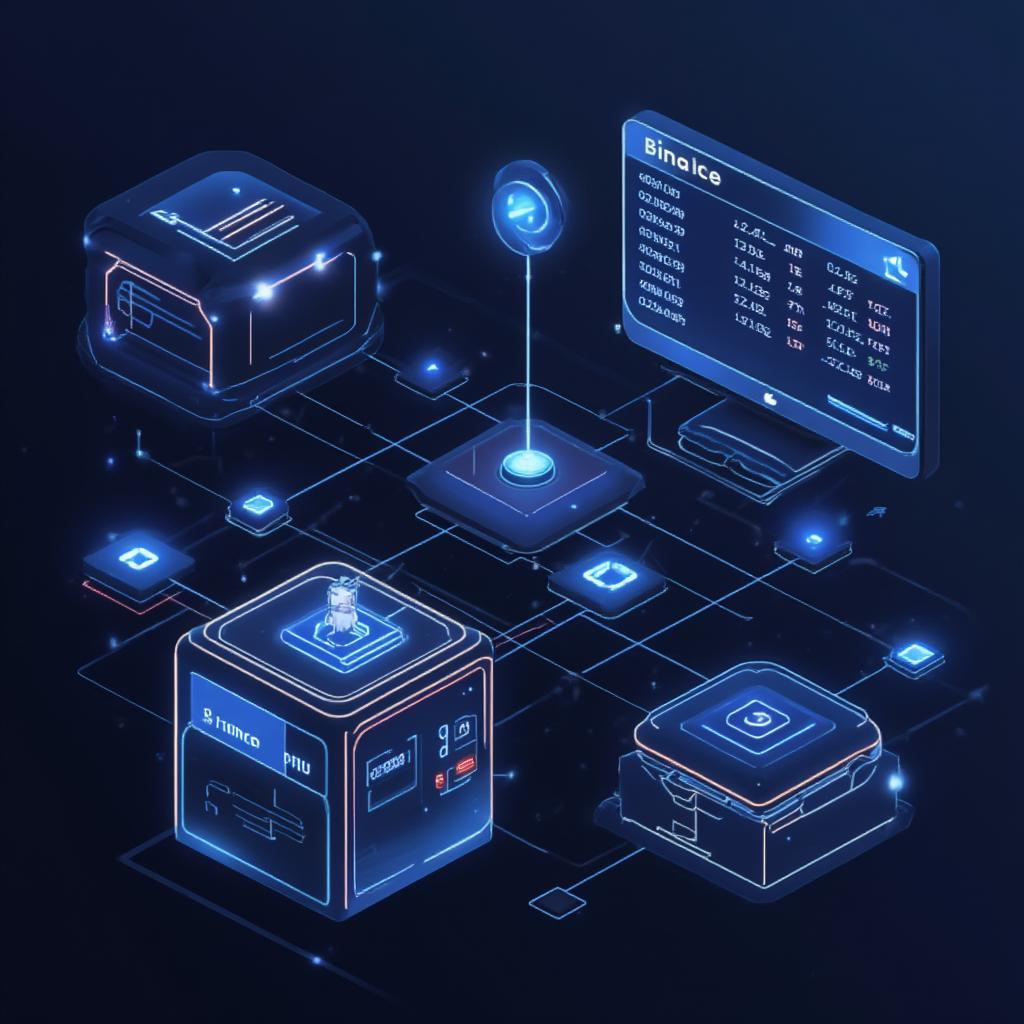
The Binance App Api opens up a world of possibilities for traders and investors looking to automate their strategies and gain deeper insights into the cryptocurrency market. But what exactly is it, and how can you leverage it effectively? This comprehensive guide will walk you through everything you need to know about the Binance app API, from its basic functionalities to advanced trading techniques. Let’s dive in and unlock the potential of this powerful tool.
What is the Binance App API and Why Should You Care?
The Binance API, or Application Programming Interface, is a set of rules and specifications that allows different software applications to communicate with each other. In the context of the Binance app, the API enables you to interact with your account programmatically. Instead of manually clicking buttons and filling out forms on the app, you can use code to perform a variety of actions, such as:
- Retrieving real-time market data: Stay ahead of the curve with up-to-the-second price quotes, order book information, and trading volume for thousands of crypto assets.
- Automated trading: Execute trades automatically based on pre-set criteria or sophisticated algorithms. This can be very helpful for those who have a specific trading strategy that they’d like to automate.
- Portfolio management: Efficiently monitor and manage your assets, including balances, transaction histories, and profitability.
- Developing custom tools: Create your own scripts and applications tailored to your specific trading needs.
- Integrating with third-party services: Connect your Binance account with other platforms and tools to create a streamlined trading environment.
For anyone serious about trading or investing in cryptocurrency, understanding and utilizing the Binance app API is a major advantage. It offers efficiency, speed, and a level of control that manual trading simply cannot match. You can start using the api binance app by following this article’s practical guide.

Understanding the Different Types of Binance APIs
Binance offers several API types to accommodate different use cases and user needs. These main categories include:
- REST API: A standard type of API that uses HTTP requests to perform actions such as reading information or placing orders. The REST API is perfect for most use cases and is easy to implement due to its use of standard protocols and wide range of support.
- WebSocket API: Enables real-time updates and communication via a persistent connection. If you need the latest market data, this type of API is ideal because it provides constant data without the need for requests. This is especially important for high-frequency trading and very short time frame traders.
- Binance Spot API: Specific for Binance’s spot exchange, facilitating buying and selling of cryptocurrencies at the current market price. The spot API is the most basic type of API in trading, which makes it perfect for those wanting to dabble or those wanting to build their own simple systems.
- Binance Futures API: Allows users to interact with Binance’s futures trading platform, managing derivatives trading like perpetual and quarterly contracts. Those who are interested in the futures markets should strongly consider this API over all others due to its functionality and capabilities.
Choosing the right API for your needs is key to a successful integration. Each API has its own specifications, data formats, and limitations. Be sure to research which API suits your needs best to minimize development time and maximize the effectiveness of your trading system.
How to Get Started with the Binance App API
Let’s walk through the steps involved in setting up your Binance API connection:
- Create a Binance account: If you don’t already have one, create an account at Binance.com and complete the necessary verification steps. The process is pretty straightforward, but you’ll need some form of ID to make sure you are who you say you are.
- Generate API Keys: Access your account settings on the Binance website, navigate to the “API Management” section, and create a new API key. Be sure to enable the correct permissions such as enabling reading or writing features, depending on how you want to use your API. The read permission is essential for gathering data but is relatively safe as it doesn’t allow you to make trades. If you plan to trade with the API, make sure to also enable writing permission, but be aware of its risks.
- Secure Your API Keys: Important note: Your API keys give access to your account, treat them as passwords! Save your API key and secret in a safe place and never share them with anyone. You will not be able to see your API secret after you generate it.
- Choose a programming language and library: The Binance API can be accessed using various programming languages like Python, JavaScript, Java, and more. Python, for example, has popular libraries like
python-binancethat make working with the API much easier. - Write your code: Start coding your program using a suitable library, following the official Binance API documentation which is available at Binance’s website. You will need to study their documentation thoroughly to have a working system.
- Implement necessary functions: Start by implementing simple functions like retrieving account balances or market data and then gradually move to more advanced trading functions.
- Test your system: Before deploying it to real trading, rigorously test your code using the API test endpoints or with a small sum of real money. This is crucial, since a small mistake in your code can lead to large losses, which you should be aware of.
By completing these steps, you can start to take advantage of the power of the Binance API.
Essential API Endpoints and Their Use Cases
The Binance API provides numerous endpoints for different functions. Here are some essential ones you should know:
/api/v3/account(Account Info): Get detailed information about your account, including balances, commissions, and trading restrictions. This is one of the most important endpoints because you’ll need to know your balance to effectively manage risk./api/v3/depth(Order Book): Retrieve the current order book for a given trading pair, providing insight into current buy and sell orders. This is essential to understanding price action and the current market situation./api/v3/trades(Recent Trades): Fetch the latest trades executed for a particular market pair, showing volume and direction. This endpoint can be very useful to gauge the true market activity on any specific pair./api/v3/ticker/price(Symbol Price): Returns the last traded price for a specific symbol. This is the most basic endpoint you will be using since it will be used in any trade./api/v3/order(Place Order): Allows you to buy or sell assets by placing market or limit orders./api/v3/klines(Candlestick Data): Obtain historical price data in the form of candlestick charts, great for conducting technical analysis. You’ll need this if you have any kind of strategy based on technical analysis.
Understanding these API endpoints is crucial to extracting the most valuable market data. The binance set up process will also become clearer once you understand these. A deeper study of Binance’s API documentation is highly recommended for those wanting to take the next step in their trading careers.
Advanced Trading Strategies with the Binance API
Once you’ve mastered the basics, the Binance API can enable you to implement advanced trading strategies:
- Algorithmic Trading: Design and execute trading strategies based on pre-defined rules and signals, removing emotion from your trading. This is the biggest and most obvious application of using the API.
- High-Frequency Trading (HFT): Execute trades at extremely high speed using optimized code and direct market access, suitable for advanced, experienced traders.
- Market Making: Set up bots to continuously place limit orders on both sides of the order book to profit from the bid-ask spread. This technique requires deep market knowledge and a good understanding of risks involved.
- Arbitrage Trading: Identify price discrepancies across different exchanges and profit from them by simultaneously buying low on one exchange and selling high on another. This technique can be complex and requires monitoring various exchanges and their real-time data.
- Grid Trading: Place buy and sell orders at preset intervals across a price range, aiming to profit from small price fluctuations. This technique is best done with the API due to its need for precise execution and consistency.
“Using the Binance API has allowed my trading to reach a new level of efficiency,” says Amelia Chen, a seasoned algorithmic trader. “It’s critical for those serious about succeeding in the crypto space.”
These strategies require a deep understanding of market dynamics and programming skills. While the API offers the flexibility to implement them, you should always approach with caution and start small to mitigate potential losses. Remember that the API is a tool that needs the right person to guide it.
Security Best Practices When Using the Binance App API
Security is paramount when working with the Binance API. Here are crucial practices to follow:
- Never share API keys: Keep your API key and secret confidential, just like a password.
- Use IP whitelisting: Restrict access to your API keys to only trusted IP addresses. You can do this directly on the Binance website within your API settings. This feature should always be used by everyone to protect their accounts.
- Enable 2FA: Enable two-factor authentication (2FA) on your Binance account for an extra layer of security. This is generally recommended for all financial accounts and is not specific to just API users.
- Regularly rotate your keys: Change your API keys periodically to prevent unauthorized access.
- Monitor API usage: Keep a close watch on your API usage and activity logs for suspicious behavior. If you suspect something wrong, immediately disable your API keys and contact support.
- Use secure connections: Always use secure connections, such as HTTPS, when making API calls.
“Security is not an option, it’s a necessity when dealing with API keys,” emphasizes Dr. Kenji Tanaka, a cybersecurity expert specializing in financial technologies. “Always keep your keys safe and use recommended practices to protect your data.”
Remember, while the API opens doors to many possibilities, it also adds potential vulnerabilities. Vigilance is key to protecting your assets. Always prioritize security and use the features and guidelines that Binance recommends.
Troubleshooting Common Issues
Sometimes, things don’t go as planned. Here are a few common issues you might encounter when working with the Binance API:
- Authentication Errors: Check your API keys, make sure they are valid, and ensure that you have the correct API key and secret. Make sure you are using the correct key for the correct action.
- Rate Limits: The Binance API imposes rate limits on the number of requests you can make within a specific period. Implement appropriate handling and backoff techniques in your code.
- Invalid Data Formats: Confirm that you are sending and receiving data in the correct format, as required by the API.
- Unexpected Errors: Consult the Binance API documentation, check the error code, and ensure your code is handling all possible exceptions. Binance has a very helpful error code list on its documentation website.
- Permission Errors: If you receive a permission error, make sure your API keys have the correct permissions assigned.
Always refer to the official Binance API documentation for the most accurate information on resolving errors and issues. Do not hesitate to look for solutions online, as many issues that you encounter will likely be solved by other users online. If nothing works, you can contact Binance support, which is usually responsive and helpful.
The Future of the Binance App API
The Binance app API will likely continue to evolve to meet the needs of its growing user base. The API may see changes such as:
- More endpoints and functionalities: Binance will continue to add more features to its API, offering more capabilities for traders and developers.
- Enhanced performance: Improvement in speed and reliability for a better trading experience, which is a continual process.
- Advanced security features: Adding more tools to keep users’ funds safe with more advanced protection measures.
- Integration with more platforms: Increasing the number of platforms and tools that can be integrated through the API.
- Support for new features: As Binance releases new trading features, they will likely become available through the API too.
As the cryptocurrency market continues to mature, the Binance API will remain an essential tool for automated trading, portfolio management, and advanced analysis. You can always stay ahead of the curve by checking out the binance crypto value daily and staying aware of its market value.
Conclusion
The Binance app API is a powerful tool for any trader or investor looking to automate, analyze, and gain a competitive edge in the crypto market. However, it’s essential to approach it with caution, dedication, and a solid understanding of both its technical capabilities and security implications. By taking the time to learn and implement the best practices, you can unlock the full potential of the Binance app API and significantly improve your trading experience. So, are you ready to take your crypto game to the next level? Remember to always remain vigilant and up-to-date with the latest Binance developments, especially regarding security. Using the API may lead to the discovery of new opportunities that you may have never thought were possible before. And while your first efforts may be difficult, remember that with perseverance and dedication, great results can always be obtained. You can learn more about binance sxp try and other opportunities on Binance today.
Frequently Asked Questions (FAQs)
-
Is it safe to use the Binance API?
Yes, it is safe if you follow proper security practices. Secure your keys, use IP whitelisting, and enable 2FA. Remember that your keys should be kept as safely as you would keep any password and be aware of their dangers.
-
What programming languages can I use with the Binance API?
The API can be accessed through numerous languages like Python, JavaScript, Java, Go, and more. Python is usually a very good choice due to its large libraries and large online community of support.
-
Can I automate my trades using the Binance API?
Absolutely. The API allows you to develop automated trading strategies using code, enabling you to execute trades according to predefined rules or algorithms.
-
What are API rate limits, and how do I manage them?
Rate limits are the restrictions on how many API calls you can make within a certain time. Handle them by implementing backoff techniques and carefully timing your requests.
-
Where can I find the official documentation for the Binance API?
The official API documentation is always available on the Binance website. This is the most up to date information you can get and it should always be used as the first source of truth.
-
Do I need to pay any fee to use the Binance API?
No, using the API itself is free, but standard transaction fees apply when you use the API to place trades.
-
How can I retrieve historical price data using the API?
Use the
/api/v3/klinesendpoint to fetch historical candlestick data. This endpoint allows you to get market data in the form of open, high, low and close prices. -
Can I access margin and futures trading using the API?
Yes, Binance provides separate APIs for spot, margin, and futures trading. You’ll need to understand the differences between them and implement the appropriate functions in your code. You may need to get a new API key for each specific type of trading.
-
What is WebSocket and how it relates to the Binance API?
WebSocket is a communication protocol that provides a persistent, real-time connection between your application and the Binance servers. It’s ideal for market data streaming and high-frequency trading. Remember, snm coin binance can have its market value updated in real time by using the WebSocket API.

